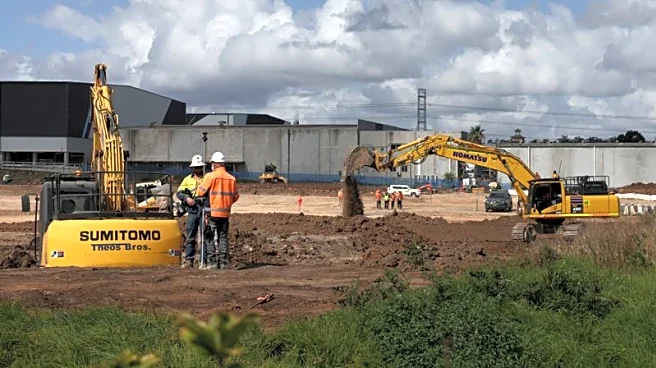What's Happening?
Sydney Airport has released its preliminary draft Master Plan 2045, which outlines a significant expansion strategy aimed at accommodating 72 million passengers annually by 2045. The plan includes the development of a new precinct linking the T2 and T3 domestic terminals, adding 12 new international gates and two additional gates at the T1 International Terminal. This expansion is expected to enhance passenger capacity and improve airline efficiency. The plan also forecasts a substantial increase in airfreight volumes and job creation, with the airport directly supporting over 105,000 jobs. The Master Plan incorporates a five-year Airport Environment Strategy to embed environmental goals into long-term planning, focusing on reducing emissions and building climate resilience.
Why It's Important?
The expansion of Sydney Airport is poised to significantly impact the regional economy, contributing an estimated $70 billion annually and creating numerous job opportunities. The increase in passenger and freight capacity is expected to boost trade, tourism, and business activities, reinforcing Sydney's position as a key gateway to Australia. However, the expansion may lead to increased airport charges, potentially affecting airfares and passenger costs. The plan's environmental strategy highlights a growing emphasis on sustainable development, which could set a precedent for other airports globally. Stakeholders, including airlines and local communities, are likely to benefit from improved infrastructure and connectivity.
What's Next?
The draft Master Plan is currently open for public consultation until December 12, 2025. Feedback from the public, government, airlines, and airport partners will be considered before the plan is submitted to the Australian Government for approval. The consultation process will determine the final adjustments to the plan, ensuring it aligns with the needs of all stakeholders. The airport's collaboration with airlines and other partners will be crucial in optimizing the efficiency and effectiveness of the proposed developments.













